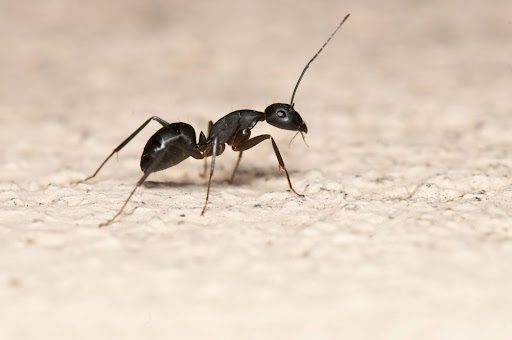Ants are among the most common household pests in North America, and while they may seem harmless at first, certain species can cause significant damage to your home.
Understanding the behavior, nesting habits, and damage potential of these tiny invaders is key to keeping them at bay, but at times, you might feel like you need an entomology degree to tell the different species apart.
Is it a black ant? Sugar ant? Pavement ant? Maybe it’s a fire ant.
Two of the most common ant species in Washington are odorous house ants and carpenter ants, but which is which? In this post, we take a look at the similarities and differences between odorous house ants vs. carpenter ants – and give you some pro tips on how you can tell them apart.
What Are Odorous House Ants?
Odorous house ants, also known as Tapinoma sessile, get their name from the strong, rotten coconut-like odor they emit when crushed.
These stinky little ants are small, usually measuring about 2.4 to 3.3 mm in length, and have a dark brown or black color. They’re commonly found nesting in soil, under stones or logs, and within leaf litter outdoors. However, they’re also known to invade homes in search of food and moisture.
Once inside your home, odorous house ants are often found in wall voids, around water pipes, and near heaters. They prefer sugary foods but will eat almost anything, including meats and greasy foods, which makes your kitchen their favorite haunt.
What Are Carpenter Ants?
Carpenter ants, belonging to the genus Camponotus, are larger than odorous house ants, with worker ants ranging from 6 to 12 mm in length. They are typically black or bicolored red and black.
Though often confused with termites, the main difference between the two is that, unlike termites, carpenter ants don’t eat wood. Instead, they excavate wood to create smooth tunnels for their nests.
These ants are usually found in dead, damp wood outdoors, such as stumps, logs, and hollow trees. Indoors, they prefer wood that is moist due to leaks, condensation, or poor ventilation, often building nests in wall voids, door frames, and windowsills.
While they’re not as destructive as termites, their excavation can weaken wood structures over time.
Odorous House Ants vs. Carpenter Ants: Signs of Infestation
The primary nuisance of odorous house ants is their presence in large numbers, especially in kitchens where they contaminate food. They don’t cause structural damage, but their strong odor and attraction to food can be quite bothersome.
Telltale signs of an odorous house ant infestation include:
- A steady trail of ants leading to food sources.
- The distinctive rotten coconut smell when ants are crushed.
- Small nests in wall voids or near moisture sources.
Carpenter ants, as mentioned earlier, pose a more serious threat due to their ability to damage wood structures. While they don’t consume wood, their nesting habits can result in significant structural damage if left untreated.
Some of the most common signs of a carpenter ant infestation include:
- Sawdust-like material called frass near wood surfaces.
- Rustling noises coming from walls or ceilings.
- Sightings of large black ants, particularly at night when they forage for food.
What to Do When You’re Dealing With an Ant Infestation
While natural remedies like vinegar sprays or essential oils might deter ants temporarily, they rarely provide a long-term solution. Professional pest control services, like our team at Natura Pest Control, offer more targeted treatments that effectively eliminate infestations and prevent future problems.
For odorous house ants, our team of pest control professionals will likely rely on baiting systems that attract ants to a poisonous food source, which they then carry back to the colony. This method helps eliminate the entire colony over time. Sealing entry points and managing food sources can reduce the likelihood of future infestations, so we’ll provide advice on where, how, and why to do this as well.
Addressing a carpenter ant infestation can be a bit more tricky, since it involves locating and destroying the main nest. This can be exceptionally challenging without professional help.
Once we’ve pinpointed the source, our team of pest control experts will use insecticidal dust and sprays directly on the nest and surrounding areas. Moisture control and repairing damaged wood are also key steps in preventing reinfestation, so we’ll walk you through that process, too.
Know How to Spot the Differences: Odorous House Ants vs. Carpenter Ants
Though the two species are distinct in their behaviors, appearances, and patterns, they can be equally problematic, both turning from a minor inconvenience into a significant problem seemingly overnight if not addressed promptly.
So, when ants march into your home uninvited, no matter the type, it’s time to call in the experts. Natura Pest Control in the Vancouver-Portland Metro area offers comprehensive solutions tailored to your specific ant problem.
Get in touch today, and say goodbye to ants of all kinds!



